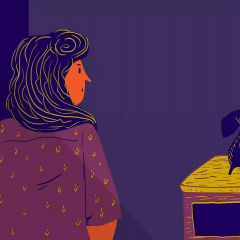In a related article, we highlighted the international phenomenon of citizens reporting to authorities on neighbours or strangers for breaches of COVID-19 rules. We identified this as ‘bystander reporting’, a concept which has direct relevance to early intervention in terrorism pathways.
The ‘bystander effect’ concept was first developed by social psychologists John Darley and Bibb Latané in 1968, following a woman’s murder that occurred in full view of many witnesses.
They found that various factors influenced whether people would step forward to intervene when witnessing risk or harm to others. Some of these factors, since confirmed by other research, include:
- the perceived danger of a situation (for both victim and bystander)
- how ‘deserving’ a victim in need of assistance seems to be
- the competence and confidence of the bystander to intervene
- the relationship between the bystander and the victim.
Darley and Latané also distinguished between ‘direct’ assistance, which involves trying to help a victim directly, and ‘detour’ assistance, which involves reporting an emergency or concern to authorities. And they observed what they called ‘diffusion of responsibility’ – the idea that when people are in a group setting, they assume someone else will intervene or report and that they need not take any action themselves.
These insights have held up over decades and many information and persuasion campaigns have been launched over the years to mediate the bystander effect and encourage more timely reporting about harms such as racism, bullying, sexual harassment and insider threats in organisations or government agencies.
Yet most bystander research has explored reporting barriers and enablers for general members of the public, or else near associates (for example, in the workplace or neighbourhood) of those causing harm. Less attention has been paid to the experience and choices of ‘social intimates' when faced with reporting on someone they are close to and care about.
When people think of ‘intimates’, they often imagine someone in a romantic or sexual primary relationship
When people think of ‘intimates’, they often imagine someone in a romantic or sexual primary relationship – for example, when talking about ‘intimate partner’ domestic violence. But in social terms, the concept of intimacy can cover a wider range of relationships between people, including those of parents and children, siblings, relatives, partners or spouses, and close friends.
In our Australian and UK studies on what can help or hinder the sharing of information with authorities when someone is concerned about violent extremism, we focused specifically on the experience of intimates in this broader sense of social intimacy.
General community bystander reporting is an essential tool for law enforcement to detect and pursue those committed to violence. As Mary Rowe notes, ‘most problematic and dangerous behaviours are observed – or even known in advance – by people other than the actor’.
In this sense, we might say that social intimates who know or suspect that something is wrong for a person they are close to are a subset of the more general bystander category. Yet while even general bystanders can find themselves confronted with difficult choices, competing interests, and painful psycho-social dilemmas, these are intensified for social intimates who may be considering reporting about someone for whom they care deeply.
These dilemmas can include:
- the social stigma attached to violent extremism in public consciousness
- emotional difficulty in betraying deep relationships of trust
- heightened concern for the social and legal impacts of sharing information with authorities
- negative reactions by others within a family or social group
- a sense of isolation and loneliness in the aftermath of reporting, especially if shame is experienced
- fear of intrusive questioning by authorities that will expose the person reporting to negative consequences.
In addition, the motives for social intimates who may share information with authorities vary from those of general bystanders. General bystanders are likely to be influenced by perceptions of risk and the diffusion of responsibility in relation to both harmful behaviours by others and the dangers or inconveniences that reporting might bring to themselves. However, social intimates come forward overwhelmingly because of personal care and concern for individuals, families and communities, which sets them apart as a bystander subgroup.
What this tells us is that community reporting by social intimates on violent extremism concerns needs a different approach than those traditionally taken by public information campaigns that encourage people to come forward to authorities.
Social intimates come forward overwhelmingly because of personal care and concern for individuals, families and communities
In our studies, social intimates did not want to be anonymous but highly valued confidentiality, and they were overwhelmingly in favour of face-to-face reporting rather than online or telephone channels.
Their motivations in coming forward were care and concern, both for the person at risk of doing harm as well as for the general community and themselves as reporters. And many would choose to go through community-level brokers like a school, local council, or religious leader – what Rowe calls the ‘bystanders of bystanders’ and Darley and Latané term ‘detour interventions’.
These differences suggest the need for carefully designed information campaigns – underpinned by locally accessible and responsive services with clear and unambiguous pathways for sharing information – to support and guide social intimates through the challenges of reporting.
Empathy and understanding of the complex psycho-social issues that characterise reporting by social intimates should be integral to reporting systems, alongside guarantees that sensitive information shared by social intimates is handled responsibly and accountably by those it is entrusted to.
Copyright Information
As part of CREST’s commitment to open access research, this text is available under a Creative Commons BY-NC-SA 4.0 licence. Please refer to our Copyright page for full details.
IMAGE CREDITS: Copyright ©2024 R. Stevens / CREST (CC BY-SA 4.0)






